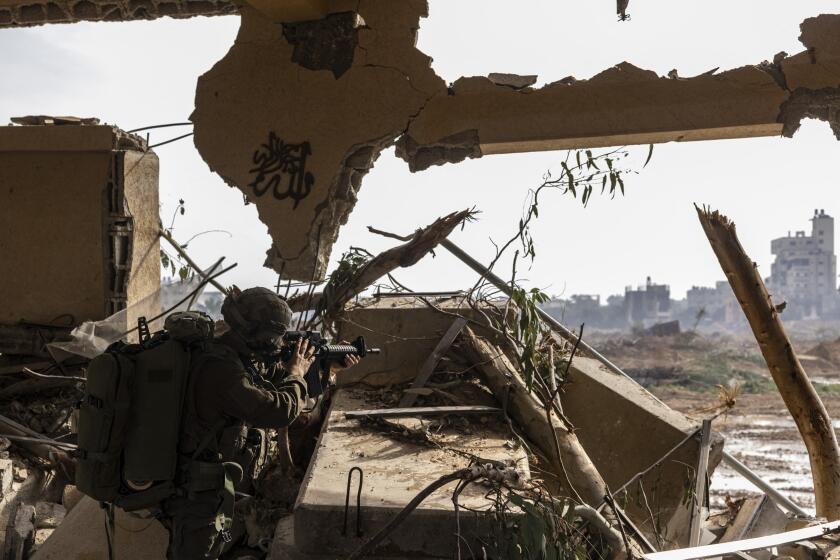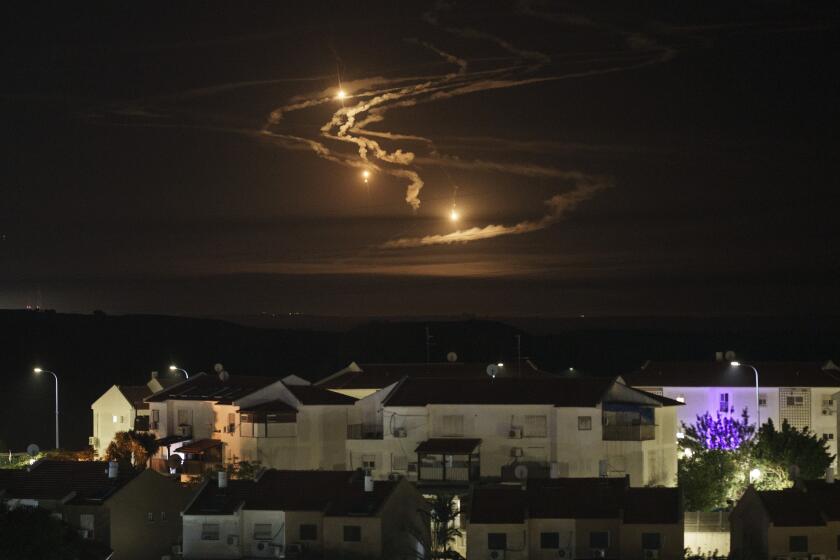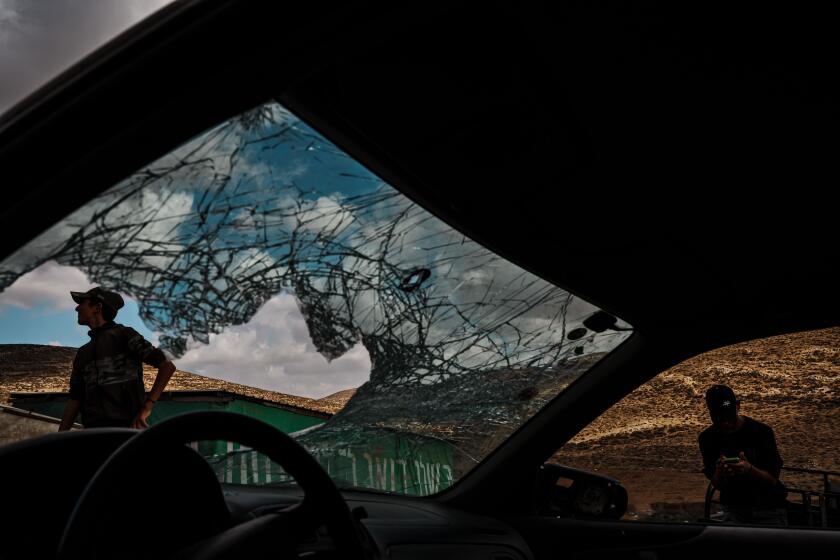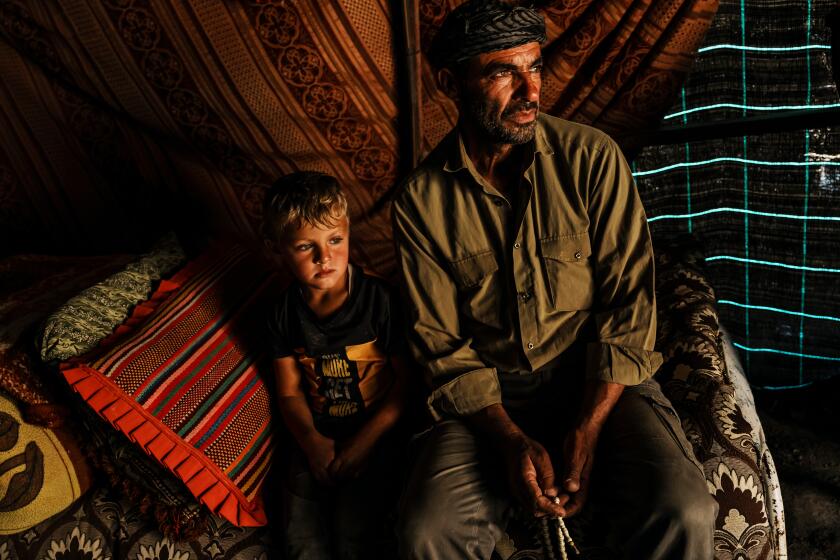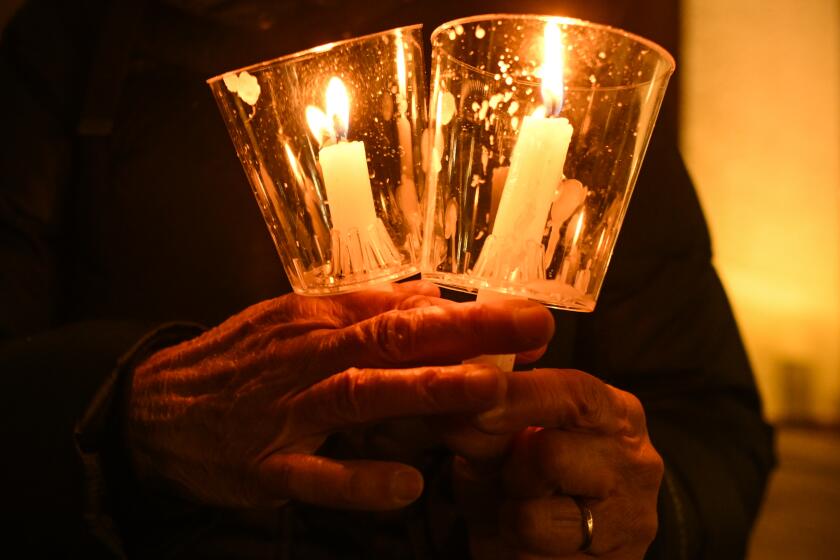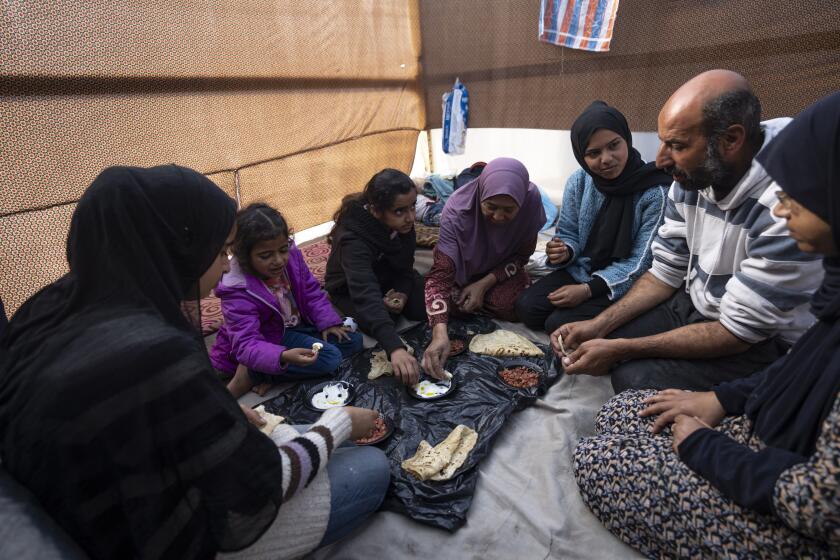Video appears to show Israeli army shooting 3 Palestinians, killing 1, without provocation
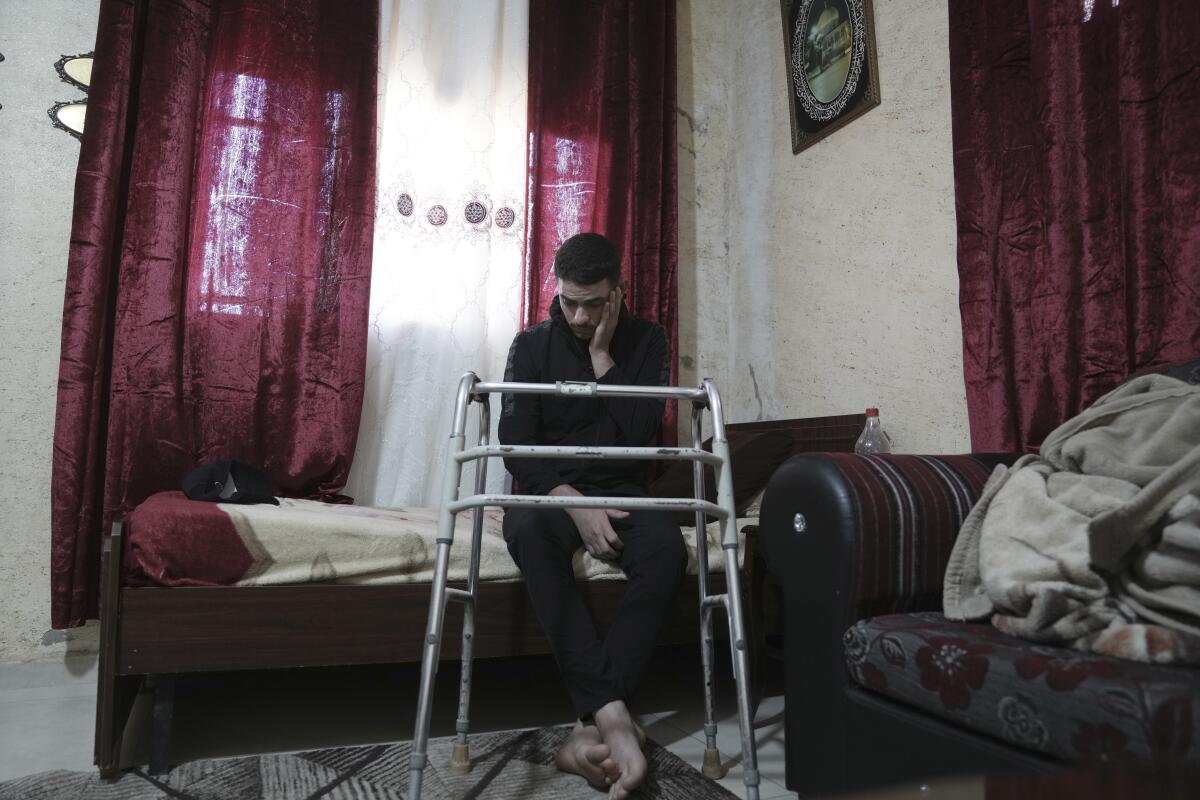
- Share via
BEIT RIMA, West Bank — Security camera video from a West Bank village shows a young man standing in a central square when he is suddenly shot and drops to the ground. Two others rushing to his aid are also hit, leaving a 17-year-old dead, moments before Israeli military jeeps roll in.
An Associated Press review of the video and interviews with the two wounded survivors strongly suggest that Israeli soldiers opened fire on the three when they did not appear to pose a threat. One of the wounded Palestinians was shot a second time after he got up and tried to hop away.
The fatal shooting in the village of Beit Rima last week is the latest in a series of incidents in which Israeli soldiers appeared to fire without provocation, a trend Palestinians say has worsened since the outbreak of the Israel-Hamas war in Gaza three months ago.
The Israeli military said troops entered Beit Rima overnight Thursday into Friday as part of a “counter-terrorism operation.” It said troops fired at suspects who threw explosives and firebombs at them.
The video, obtained by the AP from a local smoke shop, does not show anyone throwing explosives.
After reviewing the footage, a military spokesperson said soldiers reported that one of the Palestinians — visible kneeling in front of an object just outside the frame — was igniting a Molotov cocktail when he was shot.
The word has become shorthand for systems of oppressive rule around the world — and a popular refrain of pro-Palestinian activists.
The video, however, shows that the first shot does not hit the kneeling man, but rather another Palestinian man, Nader Rimawi. He told the AP that the object was a stack of cardboard boxes and scraps of paper that 17-year-old Osaid Rimawi had gathered and was preparing to light to keep the men warm.
Other videos of the shooting posted on social media and reviewed by the AP appear consistent with Nader Rimawi’s description of the object Osaid Rimawi was preparing to light. It is possible videos taken from other angles could further illuminate what happened.
In interviews with the AP, the wounded village residents denied having thrown explosives and said the shootings, which occurred about 2 a.m. Friday, were unprovoked.
Two of the six Rimawi brothers were in the town square when word spread that Israeli soldiers were in the village. They said that they were aware of the army presence but that there had been no confrontations. “We were with the young men standing at the roundabout of the town,” said Mohammed Rimawi, 25. “We started looking around as we were standing and not doing anything.”
U.S. Secretary of State Antony J. Blinken is holding talks in Israel as he seeks a plan for Gaza’s postwar future even as the fighting continues.
The half-hour security camera video begins about 20 minutes before the shootings with men gathering in small groups and walking in and out of the frame as cars come and go. Some men gesture elsewhere in the village.
The crowd in the frame eventually thins to fewer than 10 men. Then they scatter as a shot hits Mohammed’s brother, 29-year-old Nader, in the left leg.
The video shows Mohammed running to help before being shot.
“We saw a sniper who started shooting. He shot him. I went to help him. Then he shot me,” said Mohammed, who was struck by a bullet in his right hip.
‘We are surrounded,’ a Palestinian in the occupied West Bank says. Israeli settlers ‘come in uniforms so you can’t tell the difference between settler and soldier.’
The video shows Osaid rushing to aid them as he slips something into his pocket. He is quickly shot and later died of his wounds. His brother, Islam Rimawi, later told the AP that he found a lighter, 20 shekels ($5.36) and a pack of cigarettes in Osaid’s pocket.
Mohammed was able to crawl away, but the other two were left rolling on the ground. Nader stood up and attempted to hop away, before again collapsing to the ground. Speaking from his hospital bed days later, Nader said he collapsed after being shot in his right leg.
Apart from Israeli troops carrying guns, no weapons are visible throughout the video. The shooter is not visible either.
The video showed four armored Israeli vehicles arriving about two minutes after the shooting and roughly a dozen soldiers getting out, guns down. They gathered around Mohammed. One soldier prodded Osaid with his foot. Within four minutes, the soldiers left the wounded Palestinians on the ground and drove away, ignoring the stack of boxes and declining to arrest them.
Breaking News
Get breaking news, investigations, analysis and more signature journalism from the Los Angeles Times in your inbox.
You may occasionally receive promotional content from the Los Angeles Times.
Another video of the shooting reviewed by the AP shows the stack of boxes is then toppled by a Palestinian car rushing to evacuate the wounded.
Shortly afterward, Osaid — a high school student studying to become a barber — was pronounced dead at a nearby hospital.
The Israeli military spokesperson said that there were other instances where Palestinians had thrown Molotov cocktails at the forces in Beit Rima that night but said he did not know when. The men shot in the video said this was the only altercation in Beit Rima they were aware of that night.
The military did not respond when asked if soldiers had violated military policy and did not say whether there would be an official investigation.
This moment in the Israel-Hamas saga can be glimpsed in the fate of two fathers, strangers who share misfortunes brought on by larger powers and are now left to find their way
The Israeli rights group B’Tselem said that even if questionable shootings are caught on camera and investigated by the military, they rarely result in indictments.
“Cases like these happen quite regularly, but no one’s hearing about them,” said Dror Sadot, a spokesperson for the group. “The military will say that it is opening an investigation. And this investigation will last for years, probably without any media covering it. And then it will be washed down the drain.”
In response to Sadot’s allegation, a military spokesperson provided this statement: “Each investigation file is examined according to its circumstances. In the appropriate cases, various enforcement measures are taken, including the filing of indictments.”
Human rights groups have previously presented cases in which soldiers opened fire without their lives being in danger, in apparent violation of the military’s rules of engagement. In most cases, the victims were Palestinians, but Israelis have also been killed in high-profile shootings during the war.
By feeling forced to pick a side, the whole world is now experiencing what has been my life struggle — deciding whether I’m Israeli or Palestinian (and getting backlash for whichever I choose).
In December, three Israeli hostages who had escaped their Hamas captors in Gaza waved white flags and shouted for help in Hebrew before being gunned down by soldiers.
Sadot said her organization has seen an unprecedented level of violence from soldiers and settlers in the West Bank since the war broke out. The West Bank is experiencing one of the deadliest phases of violence on record, according to United Nations monitors.
Ahmed Rimawi, whose two brothers were wounded in the Beit Rima shooting, said he believes soldiers have become more aggressive since the start of the war. In the past, they would initially fire stun grenades to disperse crowds in the village. Now, he said, “they open fire directly on people.”
Palestinian health officials said 340 Palestinians have been killed in the three tense months since Hamas militants attacked southern Israel and killed about 1,200 people, mostly civilians.
Palestinians seeking refuge in southern Gaza say every day has become a desperate struggle to find food, water, medicine and working bathrooms.
Mohammed and Nader are recovering from their wounds. Both normally work at a factory in a nearby Palestinian village, packaging prepared salads for market. They said they won’t work again until they are able to walk.
Nader underwent surgery Sunday for injuries to his thigh. Mohammed has been released from the hospital but is unable to put weight on his right leg. He limps around the family’s small ornate home in Beit Rima — a village of about 4,000 people north of the city of Ramallah — with the aid of a metal walker.
Back at the village roundabout, the walls are plastered with photos of local men killed in encounters or clashes with Israeli forces. Among their ranks now appears Osaid’s photograph, gazing over the pockmarked spot in the ground where he was fatally shot.
More to Read
Sign up for Essential California
The most important California stories and recommendations in your inbox every morning.
You may occasionally receive promotional content from the Los Angeles Times.
